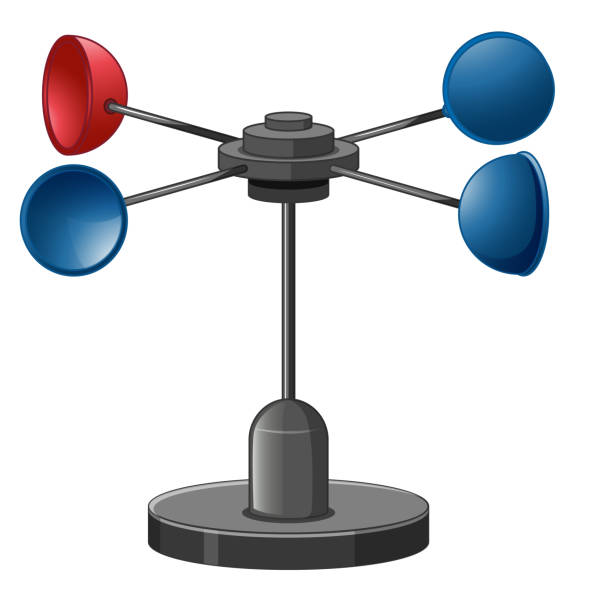Selecting the Right Anemometer: A Comprehensive Buying Overview
Selecting the Right Anemometer: A Comprehensive Buying Overview
Blog Article
Anemometers Revealed: Recognizing Their Relevance in Environmental Tracking and Security Procedures
The duty of anemometers in environmental tracking and precaution is frequently taken too lightly, yet their relevance is obvious. These instruments have a lengthy background rooted in scientific inquiry and technical improvements, advancing to become essential tools in various areas. From meteorology to aviation security, anemometers play an important duty in offering accurate data that notifies decision-making processes and boosts total safety. Understanding the details of anemometers reveals a globe of essential insights that are basic to our understanding of the environment and the procedures we require to make sure safety and security.
Background of Anemometers
The development of anemometers can be mapped back to the old human beings where basic wind measuring devices were first used. These early wind dimension tools laid the foundation for the growth of much more sophisticated anemometers gradually. Among the earliest well-known anemometers was the hemispherical cup anemometer developed by Leon Battista Alberti in the 15th century. This style consisted of four hemispherical mugs that collected wind power, offering a dimension of its intensity based on the speed of turning.
Over the years, innovations in modern technology led to the growth of more modern anemometers, consisting of ultrasonic anemometers and laser Doppler anemometers, using raised accuracy and performance in measuring wind speed and direction. The history of anemometers showcases an exceptional trip of technology and progression in the area of meteorology.
Types of Anemometers
Throughout the field of meteorology, various types of anemometers have been developed to accurately determine wind speed and direction. Sonic anemometers use ultrasonic signals to measure wind speed and direction accurately. Hot-wire anemometers operate based on the concept that the cooling result of wind on a heated cable is proportional to the wind rate.
Applications in Weather Forecasting
Having actually gone over the different sorts of anemometers used in meteorology for determining wind rate and direction, it is vital to explore their sensible applications in the area. Anemometers play an important role in weather forecasting by giving precise and real-time information on wind conditions (anemometer). Meteorologists utilize anemometers to check wind rate and direction to anticipate climate patterns, problem warnings for serious climate events like hurricanes, storms, and hurricanes, and assess climatic conditions for aviation security
In weather forecasting, anemometers help in recognizing regional and neighborhood wind patterns, which are important for anticipating weather changes and figuring out weather patterns. These gadgets are additionally utilized in study to study microclimates, metropolitan warmth islands, and air pollution dispersion. In addition, anemometers are utilized in agriculture to maximize crop management methods, such as watering and chemical application, based upon wind conditions.
Relevance in Aeronautics Security
An important aspect of making certain aviation security hinges on the precise monitoring of wind conditions making use of anemometers. Anemometers play a critical role in air travel by giving real-time information on wind rate and instructions, aiding pilots in making informed decisions throughout liftoff, trip, and touchdown. Solid and unpredictable winds can substantially influence airplane procedures, making it vital for air travel authorities to count on go to this site precise wind dimensions to make sure the safety of passengers and staff.

In the dynamic environment of air travel, where also small modifications in wind speed and instructions can have profound impacts, anemometers stand as vital tools for promoting protected and safe flight.
Role in Environmental Study
Anemometers play a crucial function in ecological study by offering necessary data on wind speed and direction. By precisely measuring wind features, anemometers assist scientists analyze the movement of pollutants in the air, examine the influence of commercial discharges, and anticipate the spread of impurities in the environment.


Final Thought
In conclusion, anemometers have actually played an essential role in environmental monitoring and precaution. With a rich background and different kinds readily available, these gadgets have been widely made use of in weather forecasting, aeronautics safety, and ecological research. Comprehending the relevance of anemometers is important for precisely measuring wind rate and instructions, which is vital for anticipating climate patterns, making sure secure aeronautics procedures, and performing environmental research studies - anemometer. Their contributions to these fields can not be underestimated.
One of the earliest recognized useful site anemometers was the hemispherical mug anemometer invented by Leon Battista Alberti in the 15th century. Over the years, developments in technology led to the growth of even more contemporary anemometers, consisting of ultrasonic anemometers and laser Doppler anemometers, using enhanced precision and efficiency in measuring wind speed and instructions. Hot-wire anemometers operate based on the principle that the cooling result of wind on a warmed cord is symmetrical to the wind rate. Meteorologists use anemometers to monitor wind rate and direction to forecast climate patterns, issue cautions for severe weather condition occasions like hurricanes, hurricanes, and tornados, and assess climatic problems for aviation safety and security.
Understanding the significance of anemometers is necessary for precisely measuring wind rate and direction, which is important for forecasting weather condition patterns, making certain secure aviation procedures, and performing ecological research studies. (anemometer)
Report this page